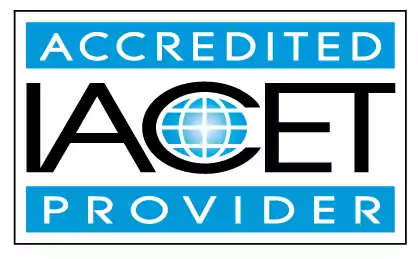Identify the components of positive relationships with children, co-workers and families.
Learn how to build positive relationships with children, co-workers, and families in the field of early childhood education and child care centers. Discover the components of professionalism in the workplace and understand your professional responsibilities towards children, families, and colleagues. Enhance your skills in creating a nurturing environment for all those involved in the early childhood industry.Trainings incorporating this outcome
CDA Subject Areas
Proficiency Level
Target Audience
Topic Areas
States
Alabama (13) Alaska (13) Alberta (15) Arizona (12) Arkansas (8) Australia (13) British Columbia (1) California (13) Colorado (13) Connecticut (13) Delaware (13) District of Columbia (12) Florida (12) Georgia (9) Hawaii (13) Idaho (13) Illinois (7) Indiana (13) Iowa (13) Jamaica (11) Kansas (12) Kentucky (6) Louisiana (13) Maine (12) Manitoba (12) Maryland (17) Massachusetts (13) Michigan (13) Minnesota (12) Mississippi (13) Missouri (5) Montana (13) Nebraska (10) Nevada (9) New Hampshire (13) New Jersey (8) New Mexico (13) New York (11) Newfoundland and Labrador (13) North Carolina (7) North Dakota (12) Nova Scotia (9) Ohio (12) Oklahoma (11) Ontario (6) Oregon (10) Pennsylvania (11) Prince Edward Island (10) Puerto Rico (12) Quebec (10) Rhode Island (12) Saskatchewan (13) South Carolina (6) South Dakota (13) Tennessee (5) Texas (10) Thailand (12) United Kingdom (12) Utah (12) Vermont (14) Virgin Islands (12) Virginia (13) Washington (14) West Virginia (13) Wisconsin (12) Wyoming (12)
120 hours courses
45 hours courses
30 hours courses
24 hours courses
18 hours courses
9 hours courses
5 hours courses
4 hours courses
3 hours courses
Related Outcomes
- Identify components of professionalism in the workplace, including caregivers’ professional responsibilities to children, families, and coworkers
- Identify appropriate practices for identify and demonstrate an children: Identify examples of appropriate activities for different ages
- Identify appropriate practices for identify and demonstrate an children: components of a lesson plan
- Identify appropriate practices for identify and demonstrate an children: Identify importance of individual planning
- Identify the stages of second language development in young children and how to partner with families.
- Recognize the importance of a positive, responsible, sensitive, and respectful attitude in working with all children and youth and their families.
- Identify common interaction strategies to help promote a positive classroom environment for young children.
- Identify the components of a lesson plan for the family child care setting
- Identify appropriate practices for identify and demonstrate an children: Teacher directed vs child directed
- Identify strategies for the child care provider that will promote successful child development. Identify strategies for working with children with special needs
- Define and identify the components of developmentally appropriate practice for children aged 2 to 5.
- Identify signs of distress in children and families experiencing divorce or separation.
- Demonstrate understanding of developing positive relationships with childcare families
- Recognize the importance of a positive and respectful attitude in working with all children and their families.
- Demonstrate the elements of positive respectful relationships that include warm, nurturing interactions with children.
- Identify appropriate practices for identify and demonstrate an children: Define Developmentally Appropriate Practice
- Identify the nutritional needs of children aged four and above.
- Teachers will identify different ways to communicate with families
Related Articles
- Lesson Planning for Infants and Toddlers
- Child care education
- Managing Behaviors in the Early Childhood Education Classroom
- How Can Childcare Educators Thrive in the Big Apple?
- Labor Day Fun: Creative Ways to Celebrate with Kids and Keep Them Engaged
- The Role of Nutrition in Child Development: What Childcare Providers Should Know
- Emergency Preparedness in Childcare: Creating and Practicing Safety Protocols
- Building Relationships: Connecting with Children and Families in Preschool
- Mini Medics: Teaching Preschoolers Basic First Aid and Safety Skills Through Play
- Ringing in Resilience: Simple Strategies for Trauma-Informed Early Education in 2025
- Trauma-Informed Care Strategies for a Calmer 2025 Classroom
- Family Childcare Is the Perfect Winter Career Move!
- You Won't Believe These 7 Must-Have Skills for Childcare Providers!
- Why Every Childcare Worker Needs This CPR & First Aid Training
- Why Working with Kids is the Ultimate Career Choice: Benefits You’ll Love!
- Child Abuse and Neglect Training: Empowering Educators to Recognize and Respond
- What They Don’t Tell You About Child Abuse and Neglect Training (But Should)
- How the Right Training Turns Child Care Workers into Rockstars
 12 CEUs
12 CEUs